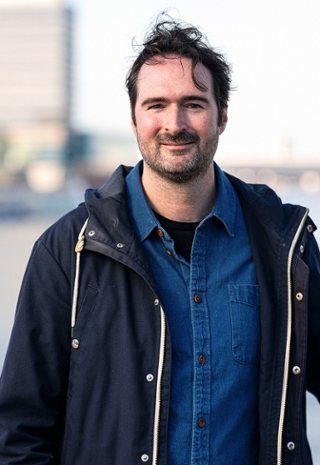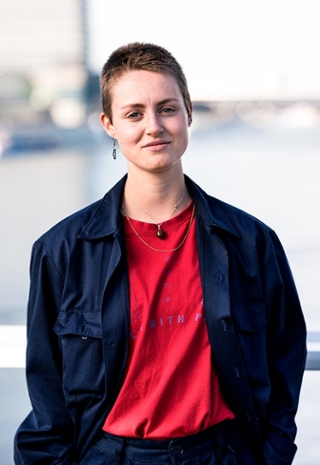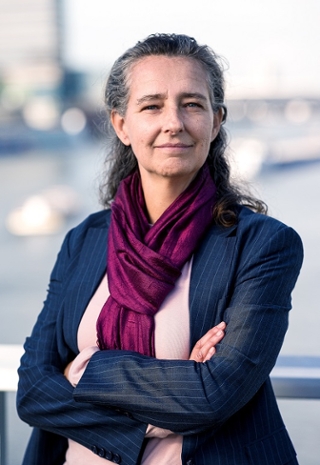
The effect of special worktop containers on waste separation
How do you get people in the big city to separate their waste?
At the Amsterdam University of Applied Sciences (AUAS), we work with organisations and companies on the major social issues of today and tomorrow: sustainability, digitalisation and diversity. As good as that sounds, what exactly does it mean?
Video over gescheiden afval
What choices do people make when it comes to separating their waste? And more importantly, what could you do to influence that behaviour in a positive way? These are the questions the BASSTA project is seeking to answer. The first step is to examine how people behave. Krispijn Faddegon is one of the behavioural researchers involved in the project. “Our particular focus is on people’s subconscious behaviour. What influences their decision to separate waste or not?” he explains.

Waste disposal diary
The basis for this is a ‘diary study’. Participants in the study are given assignments over a certain period of time and are asked to record them in a diary. “We want to identify what people’s kitchens look like and what habits they have when it comes to separating waste. This allows you to see when things are going wrong,” Faddegon explains. “ The participants describe what they have done with their waste. They also answer knowledge questions to show whether they know where to deposit certain types of waste.”
Pauline Mast made an important contribution to the creation of the diary study during her Bachelor’s degree programme in Product Design: “The study is made up of several assignments. For example: draw a map of your kitchen showing where your waste bins are located. I designed some of the assignments in the diary study.”

Floor Kuiper is policy advisor for Waste & Resources at the City of Amsterdam. “We notice that the waste separation rate remains the same. People believe sustainability and the environment are important, but actually separating their waste and thus contributing to the preservation of raw materials is more complicated in practice. Separating waste isn't part of your automatic habitual behaviour, so if you want to change it, you have to make an effort at first. This makes it difficult to change your own waste separation behaviour.”
Waste separation in small apartments
Waste separation is a big challenge, particularly in medium and high-rise buildings which account for about 80% of the homes in Amsterdam. “Separating waste in a small apartment is simply more difficult. If you live in a family house with a garden, you often have rear access and a wheelie bin in your garden, which makes it easy to separate waste. But a lot of people living in Amsterdam don’t have that.”
So other solutions need to be found. The diary study is a fun way of identifying the choices people make. The design of the assignments plays an important role in this. “The design uses many ways to encourage people to carry out the assignment ,” says Mast. “You can play with things like use of colour, shapes and typeface.” She also had that freedom as a student. “I really enjoyed that, being given the freedom to interpret the assignments in my own way.”

The assignments designed by Pauline Mast provide Faddegon’s research with interesting information. “We want to investigate what people’s habits are and what motivates them to separate their waste or not. Based on that information, we can start looking at how we can influence that behaviour. It would be nice if, at the end of the project, we could develop some good interventions for municipalities to use.”
A nudge in the right direction
Many municipalities already have programmes in place to push people’s behaviour in the right direction, says Kuiper: “It’s about eliminating the barriers to waste separation as much as possible. For example, we offer residents a special worktop container with paper bags to make it easier to take food waste to the bin. We also ensure that paper bins have a larger opening for cardboard. This helps remove the barriers.”
Nevertheless, Kuiper hopes that the BASSTA project will come up with a few more new ideas for the municipal authority to use. “It would be nice if we could more clearly determine the opportunities to guide people’s behaviour in the ‘right’ direction and what means or incentives could be used to do so.”
I think it’s really cool that we’re going to help make the city more sustainable in such a fun way.
Working together with the AUAS gives Kuiper and her colleagues every opportunity to do so. “It’s very nice to do this through practice-based research. We also use knowledge from scientific research, but such research projects often take longer. We work with practical experiments ourselves, which means that we also have a hands-on mentality as an organisation. This is what makes working with the AUAS so enjoyable for us.”
For Pauline Mast, the research project has primarily been an opportunity to grow with regard to content. “I’m a designer myself, but I’ve had the opportunity to work with different disciplines. I was paired with Applied Psychology students, for example, which I found very interesting, because I was able to apply what I learned to my own work. I also think it’s really cool that we’re going to help make the city more sustainable in such a fun way.”
